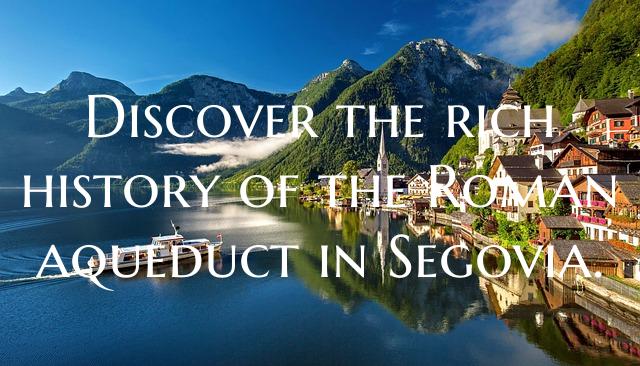
Nestled in the heart of Segovia, Spain, lies a marvel of ancient Roman architecture that stands as a testament to the ingenuity of the past - the Roman Aqueduct. This imposing structure, with its grand arches stretching gracefully across the landscape, has not only become an iconic symbol of Segovia but also a significant historical treasure that offers a glimpse into the rich history of this ancient city.
Dating back to the first century AD, the Roman Aqueduct in Segovia is a masterpiece of engineering that once served as a vital lifeline for the inhabitants of the city. Built without the use of mortar, the aqueduct consists of over 25,000 granite blocks meticulously placed on top of each other to form a series of arches stretching over 800 meters in length and reaching heights of up to 28 meters in some places.
The aqueduct was designed to transport water from the nearby Fuenfría River to the heart of Segovia, providing a reliable water supply for the growing population and sustaining the development of the city. Despite its age, the aqueduct has withstood the test of time, standing proudly as a reminder of the advanced engineering skills and architectural prowess of the Romans.
As you walk beneath the towering arches of the Roman Aqueduct, you can't help but feel a sense of awe at the sheer magnitude of this ancient structure. Each stone tells a story of a bygone era, where craftsmanship and dedication merged to create something truly remarkable.
Today, the Roman Aqueduct in Segovia continues to be a major tourist attraction, drawing visitors from around the world who come to marvel at its beauty and learn about its historical significance. Guided tours offer insights into the construction techniques used by the Romans and the importance of the aqueduct in shaping the development of Segovia.
In conclusion, the Roman Aqueduct in Segovia stands as a living monument to the enduring legacy of the Roman Empire and a reminder of the lasting impact of ancient civilizations on the modern world. By exploring this fascinating piece of history, visitors can gain a deeper understanding of the past and appreciate the remarkable achievements of our predecessors.